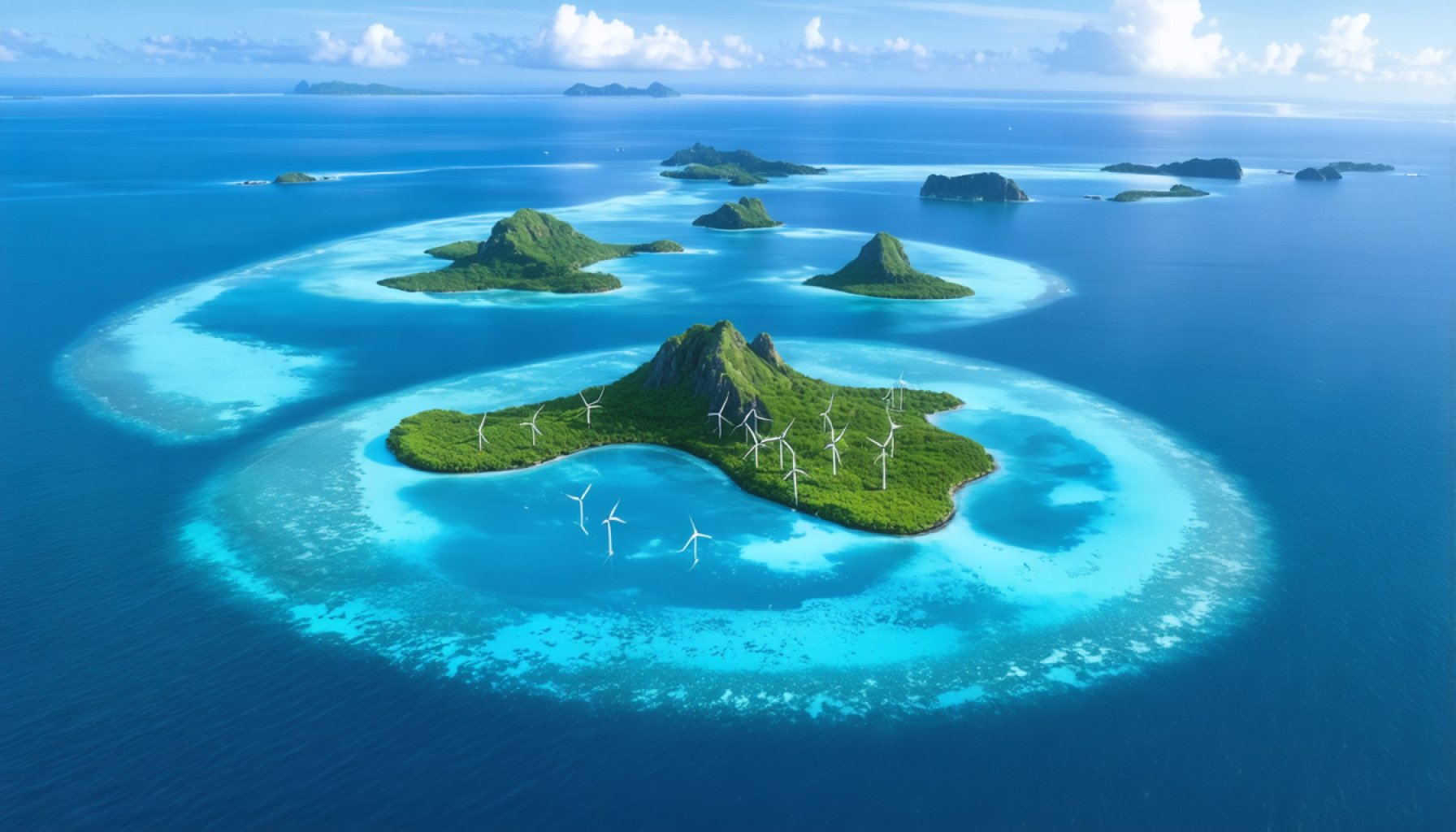- Many tropical islands are dependent on expensive and harmful fossil fuels, but ocean energy technologies offer a sustainable alternative.
- Wave and tidal energy harness the ocean’s power, providing reliable electricity to remote islands and enhancing energy security.
- These technologies operate continuously, unlike solar power, and are especially beneficial for areas like the Maldives with abundant marine resources.
- Adopting ocean-based energy systems reduces greenhouse gas emissions, minimizes reliance on fuel imports, and boosts local job creation.
- Wave and tidal installations can support marine biodiversity, creating artificial reefs and aquatic habitats.
- Challenges include high initial costs and complex permitting, but ongoing innovation and public-private partnerships are overcoming these barriers.
- Ocean energy represents a beacon of sustainability, empowering island communities to achieve environmental stewardship and self-reliance.
Far-flung tropical islands, with their picturesque landscapes and vibrant marine life, often face a harsh reality: a dependency on expensive and environmentally harmful fossil fuels. But imagine lush, palm-fringed beaches that not only delight the senses but also house cutting-edge technology quietly harnessing the ocean’s infinite power.
Wave and Tidal Energies: Nature’s Clockwork
Enter wave and tidal energy technologies—momentous players in the realm of clean energy innovation. These technologies capture the ocean’s untamed energy, converting rhythmic waves and predictable tides into reliable electricity. Remote islands, often susceptible to energy insecurity, find lifelines in these blue technologies that promise sustainability and resilience.
Take the Pacific archipelago, the Maldives, for instance. This idyllic sanctuary boasts some of the world’s most abundant wave resources. Unlike solar power that dwindles with the setting sun, ocean energy functions like nature’s clockwork, producing continuous power. Turbines lying beneath the surface hum with persistent intent, their blades swept by the ceaseless sea currents.
Greener Horizons for Island Communities
The shift to ocean-based energy heralds a new dawn for island communities globally. Not only do wave and tidal power systems dramatically reduce greenhouse gas emissions, but they also strike at the root of logistical challenges by sidestepping the need for cumbersome fuel imports. This transformative energy model fosters local job creation, encouraging expertise in renewable energy sectors and investing profits directly back into community development.
Furthermore, installations like submerged wave energy converters or tidal lagoons provide additional environmental benefits. They can create artificial reefs or aquatic habitats—enhancing biodiversity while quietly generating clean power.
Challenges and the Path Forward
Despite their promise, ocean energy technologies face hurdles: high initial costs, complex permitting processes, and the need for tailored solutions for each distinct marine environment. However, relentless innovation and increasing investment are driving down expenses and creating more robust, adaptable designs.
Nurturing public awareness and forging public-private partnerships can catalyze this green transformation from dream to reality. International efforts to standardize technologies and share resources will smooth the pathway to wide-scale implementation.
A Hopeful Tide
As ocean waves lap gently against sandy shores, so too does the tide of innovation—relentless and transformative. By harnessing the sea’s boundless energy, island communities aren’t just preserving their unique environments. They are scripting hopeful narratives of sustainability and self-reliance.
Innovators, environmentalists, and policymakers should rally around these technologies not just as sources of energy, but as beacons of empowerment and environmental stewardship. In embracing wave and tidal energy, islands worldwide can fuel their futures with nature’s own perpetual motion.
Exploring the Untapped Potential of Ocean Energy for Remote Islands
Understanding Ocean Energy Technologies
Wave and tidal energy technologies harness the kinetic energy generated by ocean currents and tidal movements to produce electricity. These technologies, including wave energy converters and tidal stream turbines, represent a promising frontier in the development of renewable energy sources. With islands heavily reliant on imported fossil fuels, this energy solution presents an opportunity for sustainable development and energy independence.
The Mechanics of Wave and Tidal Energy
Wave energy is derived from the up-and-down motion of surface waves, which can be captured by floating devices or submerged structures that convert motion into electricity. Tidal energy, on the other hand, utilizes the predictable rise and fall of the tides, driven by gravitational interactions between the Earth and moon, powering underwater turbines.
Benefits for Island Communities
1. Economic Resilience: By reducing dependence on imported fossil fuels, these technologies can buffer island economies from volatile fuel prices and supply disruptions. This stable energy pricing can lead to reduced energy costs for residents.
2. Environmental Impact: The transition to ocean-derived energy drastically cuts greenhouse gas emissions, helping islands meet international climate commitments and preserve their natural beauty.
3. Biodiversity and Ecosystem Enhancement: Some wave energy installations contribute to marine life conservation by providing structures that serve as artificial reefs.
Challenges and Solutions
– Initial Investment: The high upfront costs associated with wave and tidal energy installations are often a barrier. However, as technology advances and scales up, costs are expected to decrease. Incentivized government policies and international funding can aid initial setup.
– Permitting and Legislation: Streamlining regulatory requirements is crucial to attract investment and accelerate deployment.
– Technical Adaptation: Each island’s unique marine environment necessitates tailored technological solutions, spurring innovation in adaptable and diverse designs to accommodate varying ocean conditions.
Market Forecast and Trends
The global ocean energy market is expected to grow significantly in the coming decades, driven by both technological advancements and policy commitments to renewable energy transitions. Countries leading in ocean energy research and development include the UK, Canada, and Norway, highlighting the collective global effort toward sustainable energy solutions.
Practical Steps for Implementation
1. Engage Local Stakeholders: Involve local communities from the outset to ensure that energy projects meet their specific needs and achieve broad support.
2. Facilitate Partnerships: Forge public-private partnerships to leverage both commercial and governmental capabilities, sharing risks and rewards.
3. Technological Innovation: Support research and pilot projects to refine technologies and reduce production costs.
Conclusion and Recommendations
To capitalize on the promise of ocean energy, island communities, policymakers, and entrepreneurs must collaborate to overcome current challenges. By investing in wave and tidal energy technologies, islands can not only achieve energy independence but also contribute to global sustainability goals.
For more information on sustainability initiatives and renewable energy solutions, visit the United Nations and explore their resources on climate action and sustainable development.
Quick Tips:
– Explore potential government grants or incentives for renewable energy projects.
– Consider hybrid energy solutions that integrate solar or wind to supplement ocean energy.
– Engage with international consortia focused on marine energy research to stay updated on technological advancements.














